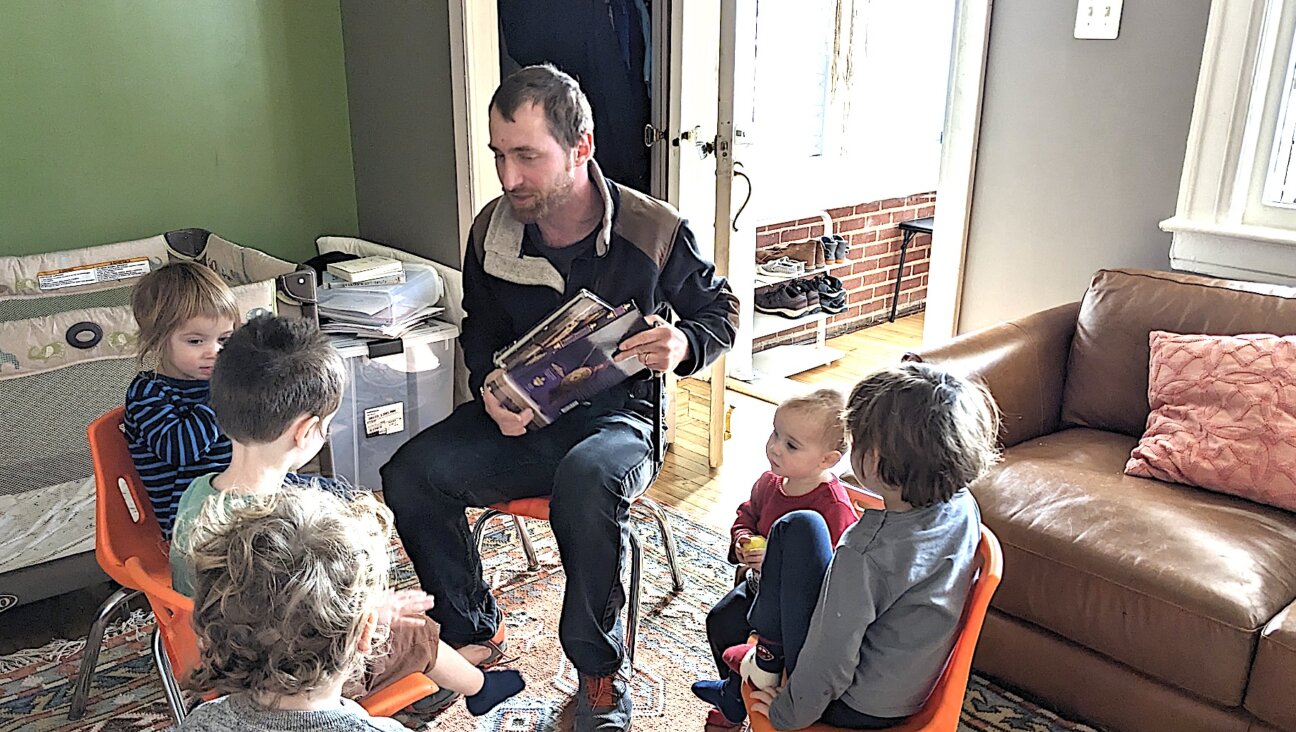Once upon a time, a Yiddish-ish ‘Mikado’ starred Danny Kaye, Jerome Robbins and Judy Garland
Though no recordings were made of the ‘Yinglish Mikado,’ traces of it remain
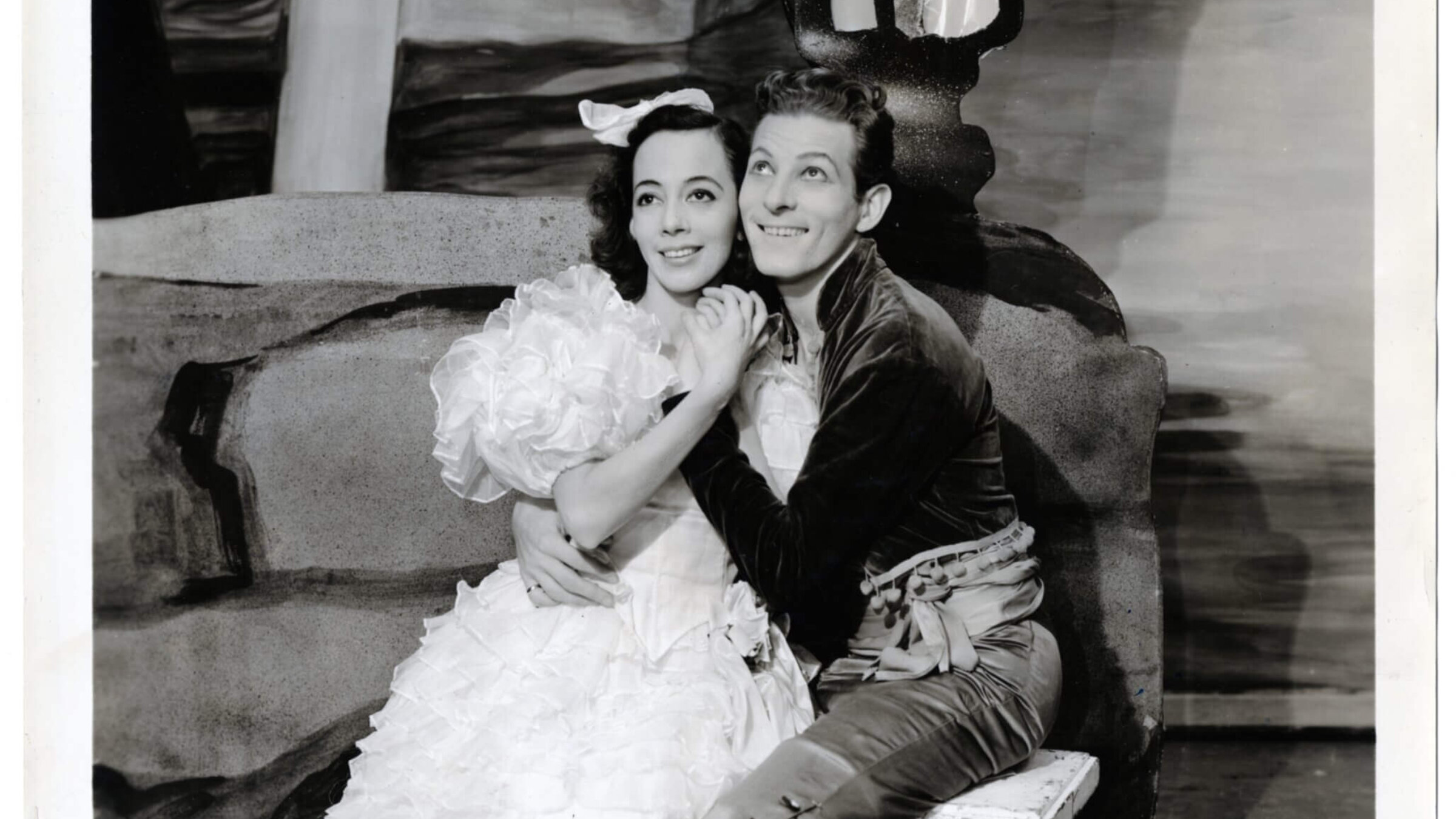
Danny Kaye with Imogene Coca, circa 1939. Courtesy of NYU Special Collections
In the ominous summer of 1939, the entertainers at Camp Tamiment in Pennsylvania’s Pocono Mountains had their eyes on Broadway and the New York World’s Fair, even as an inescapable dread haunted them from Europe. The cosmopolitan, predominantly Jewish resort in Bushkill Falls, Pa. prided itself on operating a sophisticated theater with distinctly non-Borscht Belt offerings. Their approach had initially been based on the educational goals of the Rand School of Social Science, which had established this vacation haven for socialist and trade union activists soon after WWI.
By the later 1930’s, each Saturday night show at Tamiment Playhouse had become a big draw, supporting a highly professional production staff and talent roster that played for the camp’s upwardly mobile singles crowd as well as the long-term summer family visitors. After a day at the lake, the tennis courts, and the golf course, Tamiment guests could enjoy the dance band and the singers. There was a political element to the entertainment too, as well as a certain ethnic consciousness; producer Max Liebman and members of his crew and performers had come up through Catskills-style tummeling and vaudeville. (Liebman would later write a memoir titled Make Mine Borscht and went on to create the early television format that became Your Show of Shows, which featured Imogene Coca, one of his Tamiment discoveries.) In this ambivalently heymish setting, it was in fact extraordinary that there would be a fully-Yinglish Saturday night attraction, and perhaps the looming crisis across the Atlantic gave rise to this particularly close-to-home parody.
Even before 1939, satirical songs created here addressed current events. “Stormy Troopers,” a Tamiment takeoff of “Stormy Weather” featured the phrase “hotsy-totsy Nazis” decades before Mel Brooks repurposed it for The Producers). In 1938, Sylvia Fine — the future wife of Danny Kaye — rewrote nursery rhymes to include lines like “Sing a song of sixpence / a pocketful of lies / four-and-twenty brownshirts/baked in a pie…”
But the unprecedented step of lampooning British classics in long-form colloquial Yiddish only took place during that Tamiment summer season following Kristallnacht, a camp year that also found famed Yiddish author Sholom Asch taking a rowboat ride at Tamiment during self-imposed exile from his villa outside of Nice. The anxious 1939 zeitgeist brought forth a Yinglish Gilbert and Sullivan spoof for an audience that largely got all the jokes. Scripted by the Vienna-born, Brooklyn-bred Liebman with his longtime Yiddish-loving associate Herman Shapiro, a topical Mikado found humor in the idea of presenting Hasidic gentlemen from Japan.
The show featured a legendary roster of rising stars. Tamiment newbie Danny Kaye [né Kaminsky] played Nan-ki Pooh. Jerome Robbins [né Rabinowitz] was in the chorus. Coca, who was not in the cast, later said that the show “was so brilliant, it didn’t matter that you couldn’t understand the language. I didn’t understand a word and I never laughed so hard in my life.”
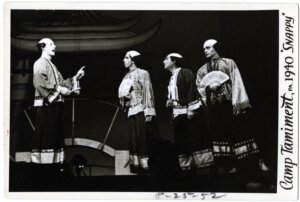
The Yinglish Mikado worked off the satirical force of Gilbert and Sullivan’s original Mikado, which is situated in a Japanese locale but directed at the British parliament. The title, “Der Richtiga Mikado” — presented in Tamiment’s Roman alphabet typescript, a non-standardized phonetic transliteration of Yiddish – translates as “The Real,” “Actual,” or “Correct Mikado,” ironically reminiscent of Yiddish translations of Shakespeare that were sometimes labeled “fartaytsht un farbesert” (“translated and improved”). As the centerpiece for a Tamiment Saturday night revue, this production covered many of the best-known highlights of the 1885 classic, featuring in-jokes referencing characters both close-by and international. It also echoed a “That There Mikado” sketch performed earlier that summer of 1939 with the same cast, in another running Tamiment Playhouse joke set in backwoods Appalachia.
So many Mikados, so little time
Der Richtiga Mikado was also a direct response, and an even better joke, in a year already super-saturated with Mikado takeoffs. Perhaps in anticipation of a British technicolor feature G&S remake, the Federal Theatre Project’s Negro Unit launched their Swing Mikado in 1938 Chicago. This musical transferred to New York where a “Battle of the Black Mikados” ensued when producer Mike Todd, after being denied the chance to produce a Broadway version of the New Deal/WPA show, countered with his own Hot Mikado starring Bill ‘Bojangles’ Robinson in a fabulously attired, jitterbugging stageshow.
If the spectacle of two rival African-American Mikados playing directly across 44th Street from one another wasn’t enough, the leftist Pins & Needles revue came up with their Ladies Garment Workers Union-cast Red Mikado on Broadway as well – a special tweak to Tamiment, which was located adjacent to the ILGWU’s own Poconos summer property. (Longstanding friction existed between the two organizations on both ideological and artistic fronts, sometimes bursting forth in catcalls from the woods in between Tamiment and the ILGWU’s Unity House.) Meanwhile, the Hot Mikado soon made a dash for the World’s Fair Music Hall in Queens, where it was a major draw even into the following year, employing a cast of 150.
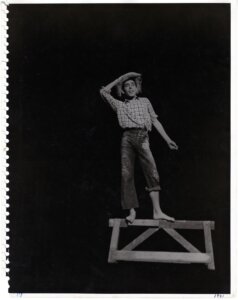
When Tamiment finally answered this unique comedy challenge, the pair of supremely gifted young performers, Kaye and Robbins, in starring roles had each crafted their soon-to-be-famous names either shortly before or during their summers in the Poconos. And as it happened, the closeting of their Jewish identities in plain sight corresponded also with varying degrees of closeted sexuality in what seems to have been a relatively tolerant haven of the entertainment world.
The former David Daniel Kaminsky aka Kaye had worked not long before at White Roe Lake Hotel in Livingston Manor, N.Y. – right along the Route 17 Borscht Belt mainline — improvising a zany craft with master tumler Fishl Goldfarb. Also previously known on entertainment circuits as Dan Kolbin, a younger Danny Kaye had dated Second Avenue Yiddish theater star Lillian Lux, who became a longtime friend after their romantic attachment waned. Kaye was recommended for the 1939 Tamiment season by Sylvia Fine at the last minute when another performer was unavailable. The Kaye-Fine showbiz alliance soon began when she wrote much of Danny’s early custom material for numbers in the Poconos, many of which he continued to reprise later in his career. Among her first hit musical and lyrical creations for him was “Anatole of Paris,” which cast Kaye as a flamboyant hat designer, with a full-on fey affect to which he often returned — both in public performance and at various after-hours events over the years.
Opposite Kaye — also costumed in kimono/kapote and Samurai baldcap wig, — was the modern dancer and future director Jerome Robbins who, like Kaye, was the American-born son of Yiddish-speaking immigrants. Robbins (who experimented with several stage name variations on Rabinowitz during his first season at Tamiment) had even spent one bucolic childhood summer in 1920’s Eastern Europe, visiting his grandfather’s shtetl Rozhanka. He made his stage debut dancing in the Brothers Ashkenazi at the Yiddish Art Theater. Yet decades later he argued bitterly with Zero Mostel about stage business which he felt was too specifically Jewish for Fiddler on the Roof (when Robbins demanded Mostel stop kissing an imaginary stage-set mezuzah, Tevye promptly crossed himself instead).
And while there may even now be controversy about Kaye’s own sexuality, the closeted Robbins eventually came out, years after naming names to the House Un-American Activities Committee (HUAC) in 1953. He may have been under extra pressure to out Communists, since HUAC revelations of homosexuality might well have ended his career. The progressive, open-minded Tamiment scene seems to have offered a relatively tolerant atmosphere for gay performers even into the McCarthy-era 1950s, and perhaps earlier as well, as attested to by accounts in Mary Rodgers’ brash memoir depicting her creation of The Princess and the Pea during her creative Poconos sojourn in the post-Max Liebman years.
Woody Allen, who also wrote and began performing at Tamiment in this post-McCarthy era, may have later been visually referencing a 1940’s wartime civilian Danny Kaye in the lanky, strawberry-blonde date he cast as Dianne Wiest’s reluctant suitor for the coming-out scene in the WWII period work Radio Days (Bea: ‘You never told me your fiancee’s name was Leonard….’ ‘How could I?”)
Out of the Yiddish closet
The fact that both Kaye and Robbins starred in this memorable Mikado was in any case more reflective of opening their Yiddish closets, from which they tended to shy away later on in their careers. Various 1939 Tamiment actors, like the majority of their audience, had grown up around Yiddish, later becoming highly assimilated. Landing these jokes demanded lexical precision, which both Robbins and Kaye could deliver.
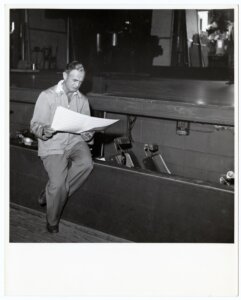
Clearly, the culturally-layered Mikado tempted widely diverse performance companies to transmogrify its idiom, and this Yinglish version showed staying power in overlaying familiar songs from a G&S favorite. But its punchlines also continue to work even in scenes without music, as I noticed long before finally finding several full (or nearly complete) Yinglish original typescripts online at the Library of Congress.
No matter how much of a hit Tamiment’s Yinglish Mikado may have been in the summer of 1939, the show’s sheer unabashed Jewish take ruled it out from the Poconos-to-Broadway pipeline that Liebman’s talent incubator could offer to some of its most popular pieces and performers. Yet the sketch returned to Tamiment by popular demand the following summer before finding a new launching pad in an even more heady adaptation, about three years later and 3,000 miles westward when Danny Kaye and Sylvia Fine presented it in Hollywood at a party thrown by the (married) Joe Mankiewicz for his girlfriend Judy Garland. This new Mikado replaced the Tamiment Playhouse jokes about Hitler, Mussolini and Neville Chamberlain as well as dated references to New York and Poconos personalities with punchlines about the movie business.
This Hollywood Mikado featured satirical digs directed at top studio figures, made more potent by the mixed emotions these moguls had about their own Jewish roots. Bilingual wisecracks zinged both Louis B. Mayer and Sam Goldwyn (né Szmuel Gelbfisz / Samuel Goldfish, who signed Danny Kaye hoping to “fix” his nose but compromised by dyeing the ex-tummler’s red hair a less Jewish shade of blond). Among those attending the invitation-only show at Danny’s and Sylvia’s Los Angeles home were John Garfield (né Jacob Julius Garfinkle) and James Cagney (not a Jew, though he was fluent in Yiddish). The party setting and customized script seem to have cultivated what gay film historian Vito Russo liked to call not Judaism but “Judy-ism.”
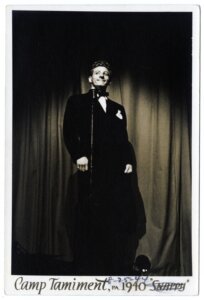
The West Coast version included a Hollywood drag element: “The Three Little Maids from School” – aka Drei vaibalach fin shule — were performed by Kaye as Princess Peep-Bo, Mankiewicz as romantic lead Yum Yum, and Garland as Princess Pitti-Sing. Their trio featured triple entendre routines with dual language set-up. While Judy was the only “maidl” who needed pronunciation guidance, the trio’s audaciously tacky rhyme scheme maximized the irony for her cross-dressed Jewish boyfriend:
Drei vaibalach – drei guta fixers
Mit di menner mir zint mixers
Ich zing alain vai’ll zay zunnen schiksas
ALL: “Three little women – three good fixers
With these men we are mixers”
YUM YUM: “I sing alone ‘cause they are shikses”
Well-worn, margin-scribbled carbon copies of both the Poconos and Hollywood versions are deposited at the Library of Congress , all with their own idiomatic markings, in collections donated by Sylvia Fine. The archived copy of the Tamiment script version is preserved intact though each copy of the Hollywood versions is missing a page which may well have contained the show’s most topical and disparaging lines, particularly in the number “As Someday It May Happen,” better known as “I’ve Got a Little List.” The 1939 version of that song featured swipes at Hitler (“Der Painter dort in Deutschland”), the ‘grubyan’ [vulgarian] Mussolini, and the antisemitic leader Father Coughlin.
As with so many Yiddish comedies, happily ever after means ending with a wedding, in this case the song “For He’s Going to Marry Yum-Yum”: “mi gait machen whoopee” [we go make whoopee] “mit shtellen a choopee” [putting up a ‘chuppee’]. And though the Tamiment show ended with a slug of an Old World liquor: “Mit branfin [brandy] end whiskey end rum,” the Hollywood show concluded with merely “Whiskey end soda end rum.” Either way, at its conclusion, the show offered a liquid l’chaim chaser.
And by the time Tamiment finally performed its Yinglish Mikado, strong drinks would have answered deeply sobering news. The entire resort season led up to its Labor Day weekend crescendo, and the storm of war which had threatened all summer broke out just before the big finale revue went onstage. Saturday night showtime was Sept. 2, 1939 — the day after the Nazis invaded Poland.









